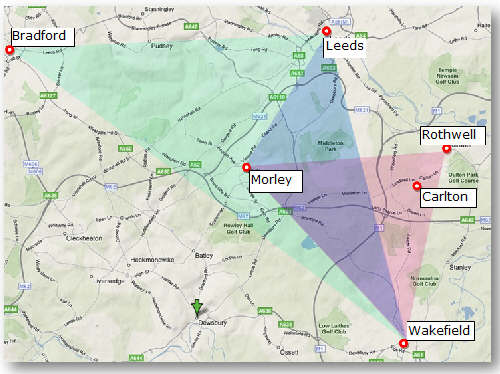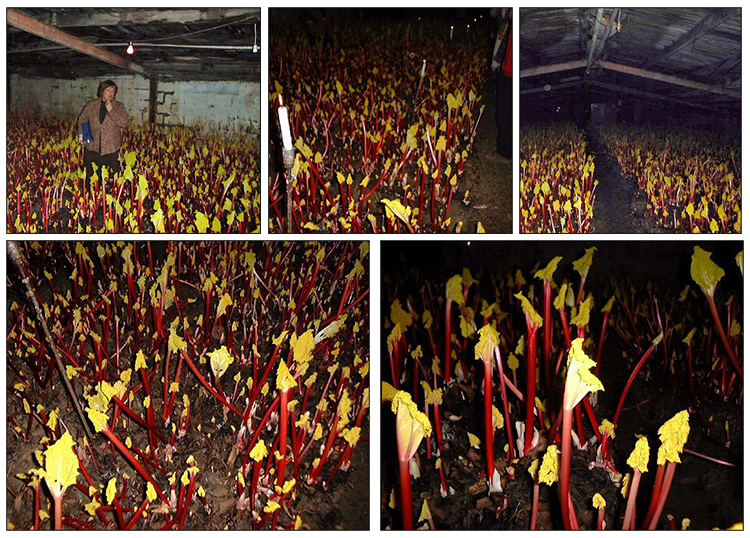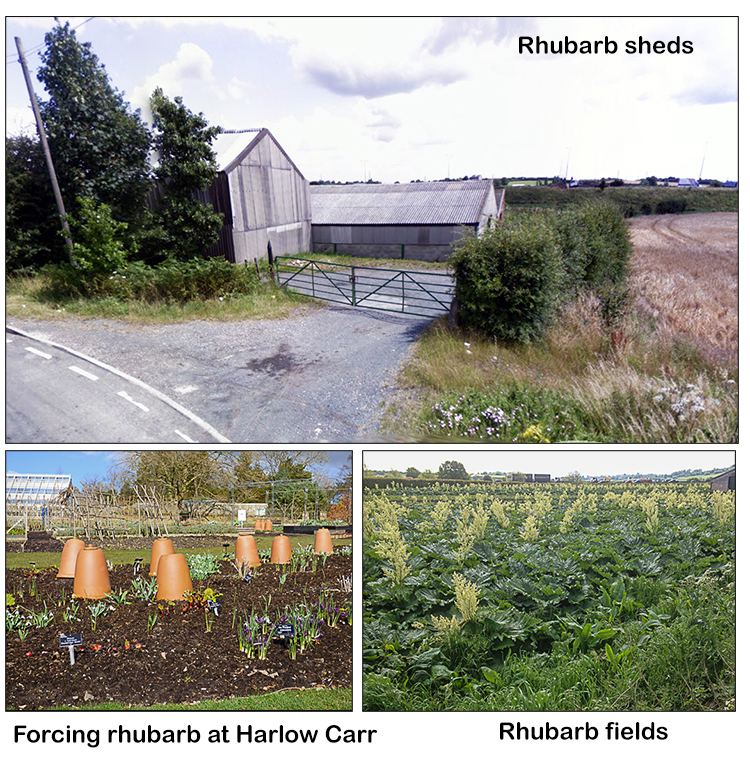

Home
About Us
Allotments
Garden Equipment
Seed Suppliers
Manure Problems
Children's Pages
GLA Blog
Weather Blog
School Veg Patch
Useful Links
The Rhubarb Triangle
The rhubarb triangle is officially the triangular area named due to its history of rhubarb growing. The location of the ‘triangle’ is sometimes described as the triangular area formed between the three cities of Leeds, Wakefield and Bradford, (the green triangle of the map), other sources of information give the points of the triangle as Leeds, Morley and Wakefield, (the blue triangle on the map). However, the largest area of rhubarb cultivation falls outside of both of these ‘triangles.

The rhubarb triangle is more accurately the triangular area of land between Morley, Wakefield and Rothwell (the red triangle on the map). Much rhubarb is grown around the village of Carlton. In fact recently there had been some suggestion that Carlton change its name to Rhubarb!

Each year a Rhubarb Festival is held in Wakefield, the capital city of the rhubarb triangle, with people arriving from all over the country to attend. During the festival demonstrations of cookery with rhubarb and visits to local world famous forcing sheds are on offer. Although at one time when there were around two hundred rhubarb growers in the area, the secrets of successful rhubarb growing was a closely guarded secret and visitors would be kept well away from the forcing sheds.

The darkness is essential to the production of the pale forced rhubarb much favoured by restaurants. The darkness means that all the plants energy is put into the growth of long pale stems rather than lush green leaves. This produces a sweeter crop.

Rhubarb plants are grown in the open for two years to build up energy within the plant. They are then taken into the forcing sheds where they are cropped for a year before they are thrown away as forcing severely weakens the plants.
About 90% of the world’s forced rhubarb was grown in the rhubarb triangle. At one time it was the only fresh fruit/vegetable available in the winter but after World War II more exotic fruits from overseas became available which caused a decline in its popularity. The two hundred growers have diminished to about twelve.

[Rhubarb production - taken from Live Search Maps]
Nowadays the popularity of rhubarb is once again on the increase as people’s tastes change and sharp fruits are once more in ‘fashion’. This renaissance has maybe saved the rhubarb triangle from fading into extinction.
Click here for everything you have NEVER needed to know about rhubarb!
Click here to visit another rhubarb grower near to us
Our Plot at Green Lane Allotments Blog | A Gardener's Weather Diary | School Vegetable Patch Website
© Our Plot on Green Lane Allotments - Please email me if you wish to use any of this site's content
Our Plot at Green Lane Allotments Blog | A Gardener's Weather Diary | School Vegetable Patch Website
© Our Plot on Green Lane Allotments - Please email me if you wish to use any of this site's content